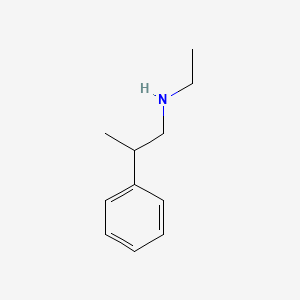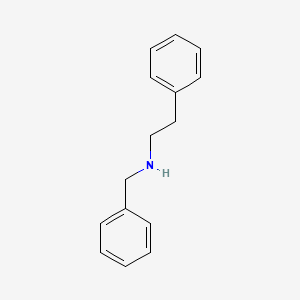N-Ethyl-2-phenylpropan-1-amine

Synonyms: N-ethyl-Beta-Methylphenylethylamine
CID 15788198
Years ago the supplement industry released Beta-MethylPhenylethylamine (b-methyl-PEA) in an attempt to enhance the effects of phenylethylamine without impinging on the Federal Analog Act (FAA). These guidelines were developed to restrict the production of designer amphetamines through chemical manipulation. B-methyl-PEA was able to side step these guidelines, and since it was easily isolatable in various plants, its legality was rarely in question. Unfortunately, the same chemical nature which made it easily side step FAA also made it inert at even large doses. As Shulgin determined decades ago, a beta-methyl group is too far away from the nitrogen to sterically protect against MAO, and therefore the differences between regular PEA and b-Methyl-PEA are negligible.
N-ethyl-Beta-Methylphenylethylamine, on the other hand, possesses a fairly bulky ethyl substituent coming off the nitrogen. This substituent should protect the nitrogen from rapid MAO deamination, and therefore prolong the drugs half life significantly (See: Amphetamine vs. N-ethylamphetamine). Pharmacodynamically, this drug will act no different then regular PEA, although its longevity will enhance its catecholamine "releasing" properties, especially with acute supplementation. Similarly, the N-ethyl group will also increase the compounds amphipathism, which may expedite CNS penetration.
N-Benzyl-2-phenethylamine

Synonyms: Benethamine, N-Benzyl-2-PEA
CID 65055
Extensive research with alpha-methylated derivatives of this compound (See: Benzphetamine, N-Benzylamphetamine) indicate that the main metabolite of N-Benzyl-2-PEA will be PEA. Similar to the compound previously discussed, the N-benzyl substituent will likely enjoy a longer half life than regular PEA. It should offer more CNS penetration due to the non-polarity of the benzyl moiety. The main difference between PEA and its N-benzyl derivative is that the latter may produce a local anesthetic effect relating to sodium channel inhibition. It may also possess weak sigma receptor proclivity in addition to theoretical 5-HT(2A) agonism.
In summary, these compounds may indeed be superior pharmacological derivatives of phenylethylamine, although vastly inferior to alpha-substituted analogues. N-benzyl-2-PEA is a constituent of the Erythropalum scandens species, and so is likely DSHEA compliant (1). Unfortuantely, no animal or human study exists, and the potential for negative health effects, although unlikely, are not excluded.
(1) Erythropalum scandens: http://japsonline.com/admin/php/uploads/283_pdf.pdf